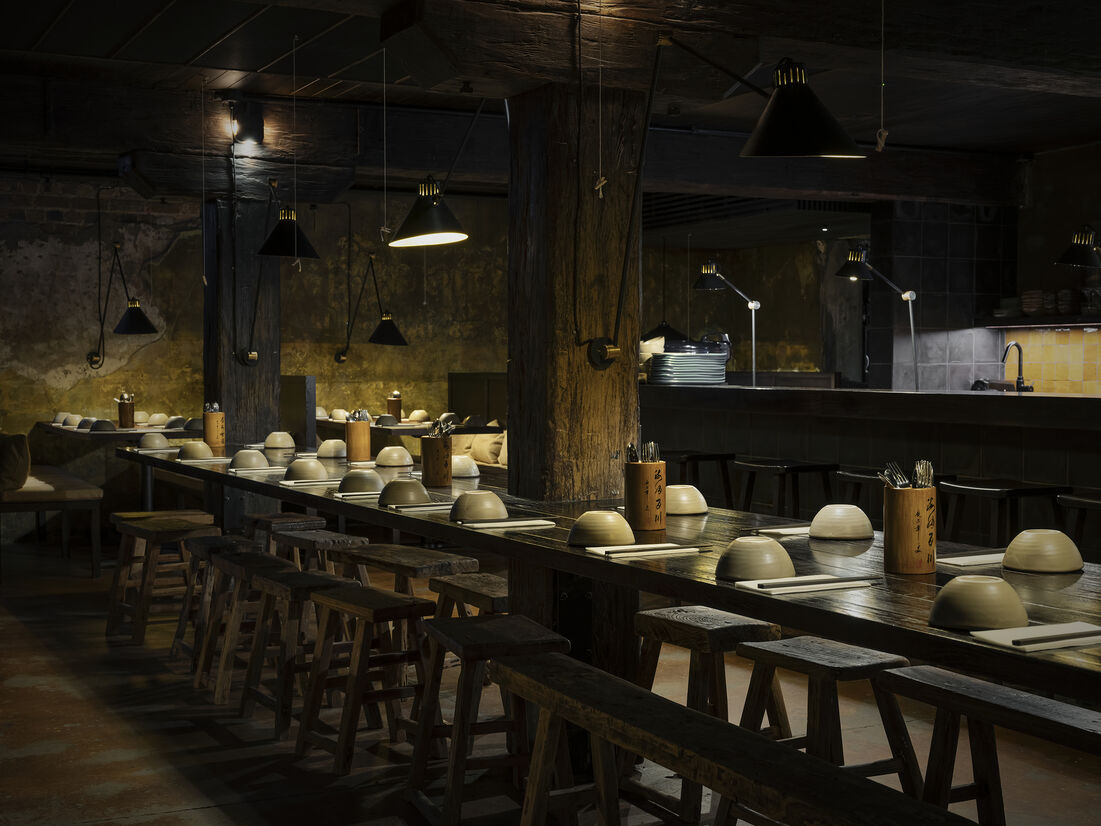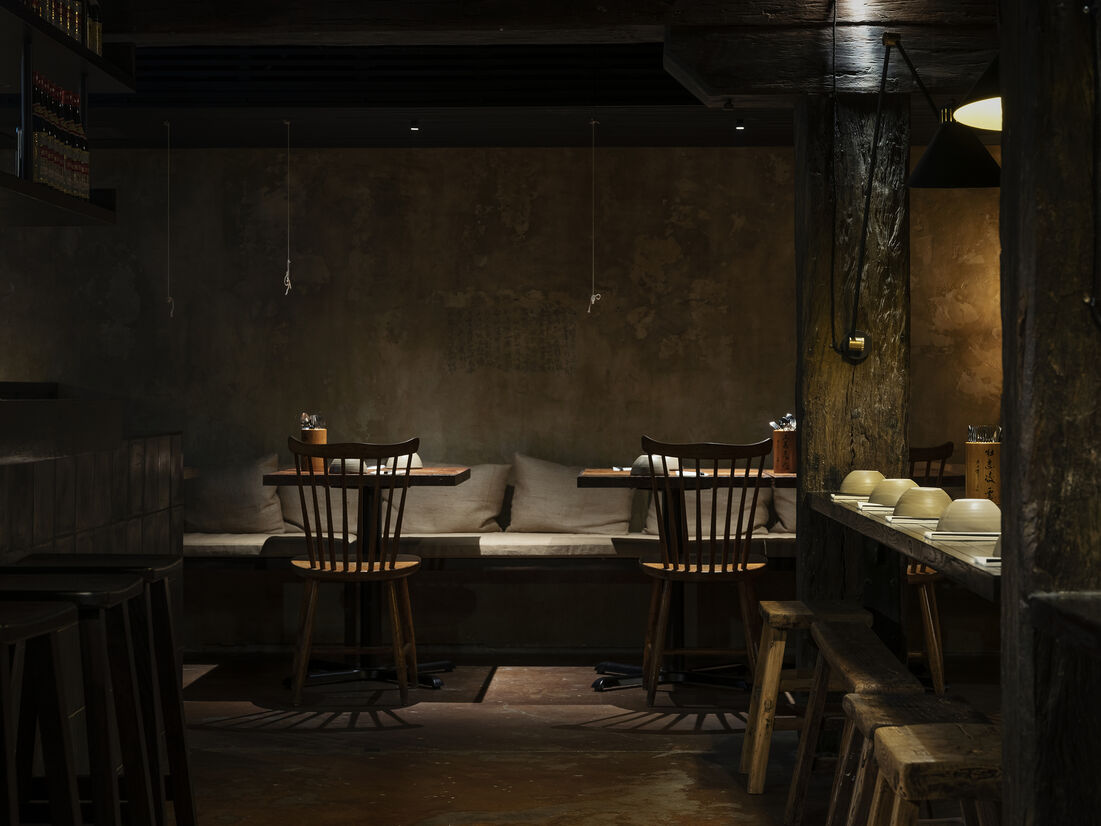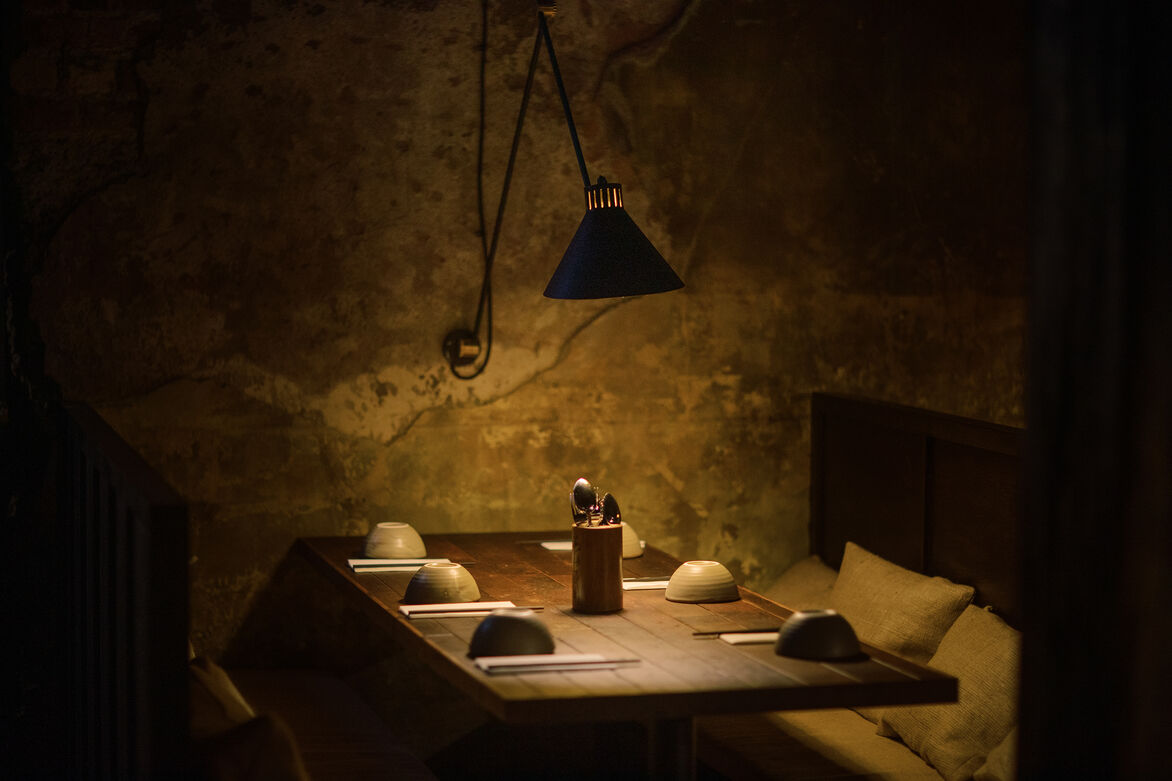Spatial
Cheshire Architects 68 Ghost Street
-
Pou Auaha / Creative Director
Nat Cheshire
-
Ringatoi Matua / Design Director
Dajiang Tai
-
Ngā Kaimahi / Team Members
James Ting, Fraser Horton -
Client
Comensa Group










Description:
Ghost Street is a Chinese restaurant that plays with shadow and form. We began at its infancy, from the shaping of its concept, to personally hand crafting a series of ink covered calligraphy walls, bespoke cabinetry and relics that line the walls.
Sitting in the heart of Britomart, its patrons must negotiate a bustling sunlit laneway, a corbelled doorway, meander through a narrow stairwell to the restaurant entrance that reveals itself under a faint but warm flicker of candlelight.
The restaurant was conceived as an unlit theatre stage; a subterranean room in a 140-year-old heritage building, with the occasional shaft of daylight penetrating its darkness. Layers of rich historic texture retreat and allow the dining performance to take centre stage. The gnarled antique beams, the chipped and beaten floor, the splintered golden plaster, the faded calligraphy on the walls – all humbly united in the shadows of the space. Tables and chairs form below pools of warm glowing light, celebrating the joys of dining in a den like space, whilst illuminating the patrons faces and handmade bowls of bang bang noodles below.
The room is nicely proportioned, almost square in its form. Its centrepiece the black-tiled kitchen that lines an entire side of the darkly lit space. Here, chefs perform their daily rituals as a spectacle of sorts, encircled by whirls of steam and smoke, and orbited by the diners they are cooking for.
We were fortunate enough to be involved in the very beginning of the project, working in a dynamic and fluid manner, detailing bespoke metal spun lights, rich lacquered cabinetry and placing old relics found at flea markets as things evolved. We sampled food over client meetings, sketched layouts and debated every aspect of the design in our spare time. It was a fast-paced whirlwind, a rush to the senses, and without this organic process it would not have become what it is today.
Judge's comments:
An international feeling to this project sells the narrative of a beautifully crafted authentic Chinese restaurant, sensual and rich, the design is well considered, with lighting, materiality, flooring all cohesively designed.